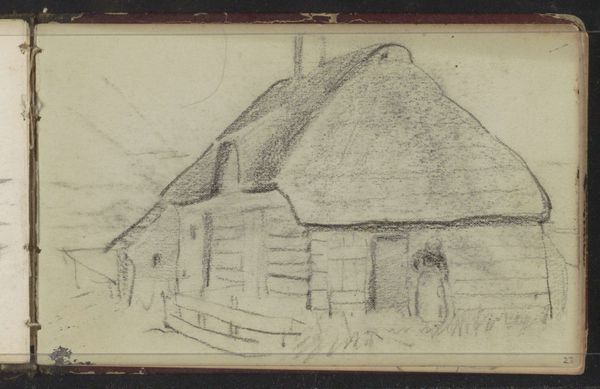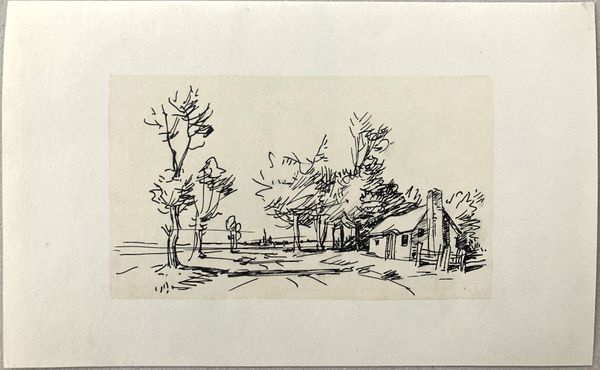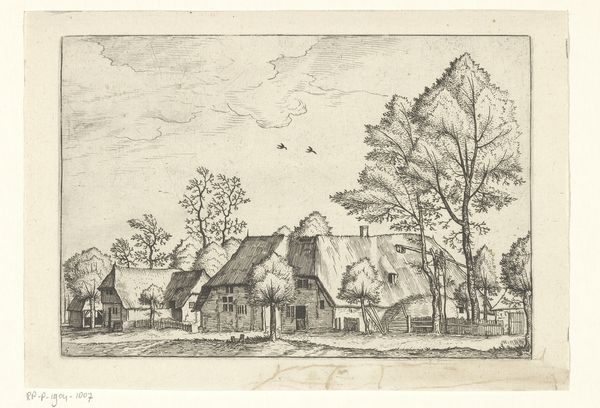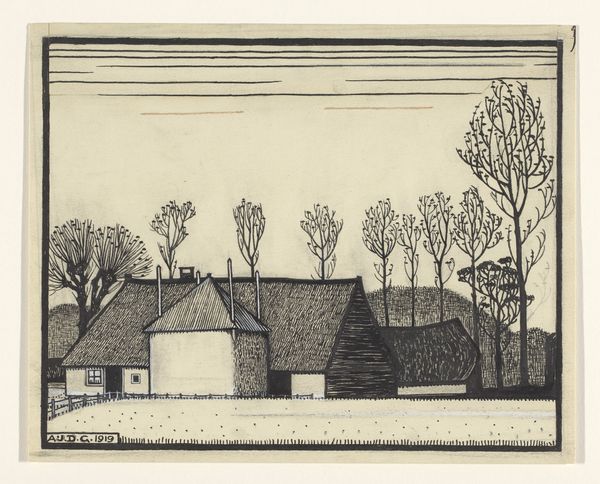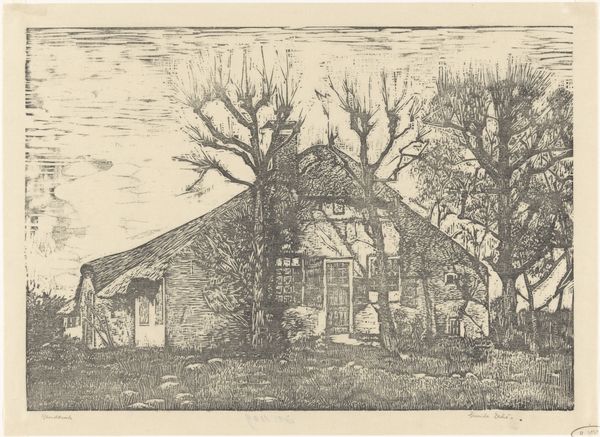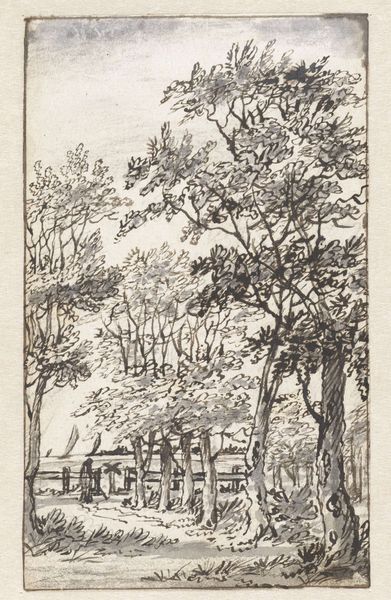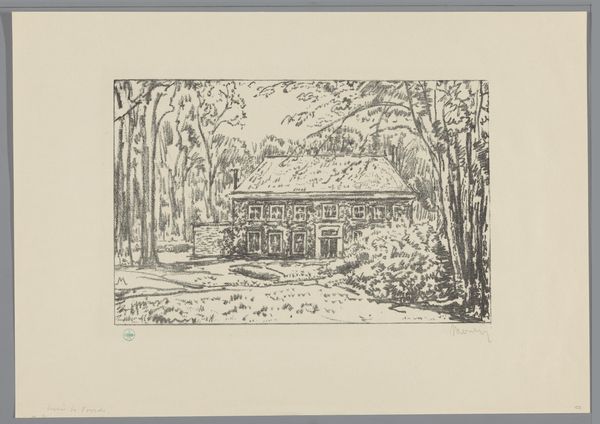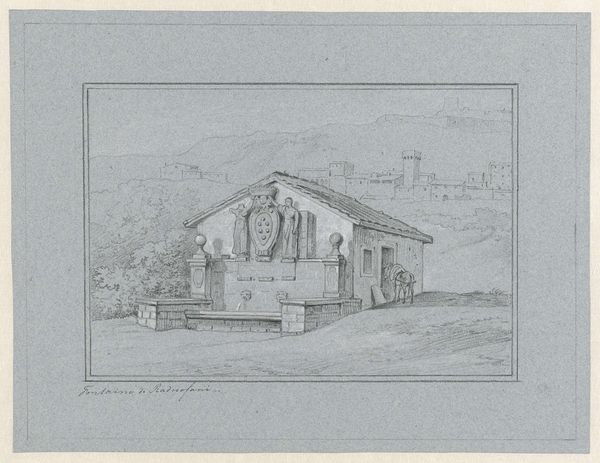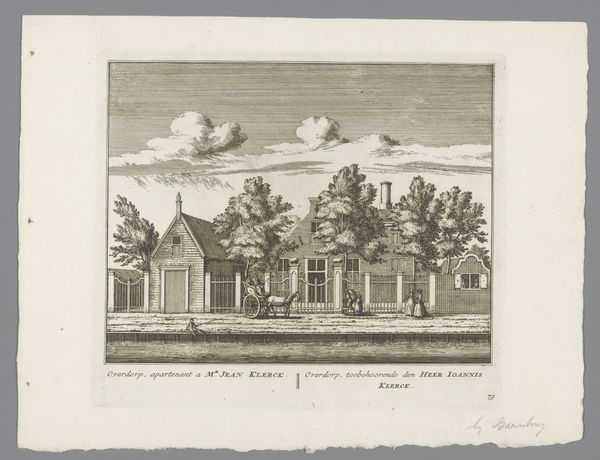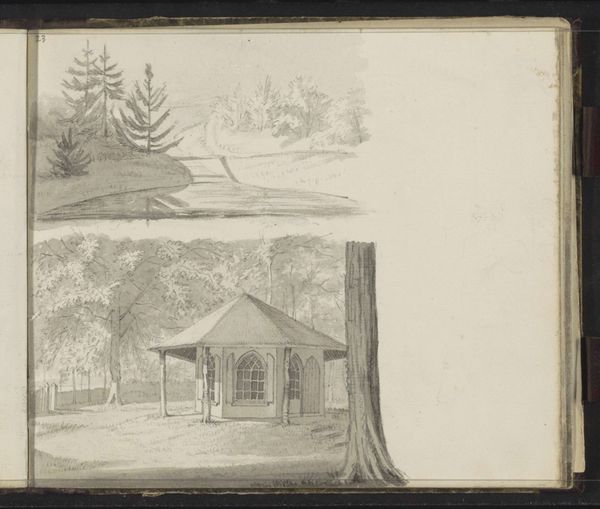
drawing, paper, pencil
#
drawing
#
comic strip sketch
#
pen illustration
#
pen sketch
#
landscape
#
paper
#
personal sketchbook
#
ink drawing experimentation
#
pen-ink sketch
#
pencil
#
pen work
#
sketchbook drawing
#
storyboard and sketchbook work
#
sketchbook art
#
realism
Dimensions: height 201 mm, width 235 mm
Copyright: Rijks Museum: Open Domain
Editor: This drawing, “Landschap met boerderij,” which translates to “Landscape with Farmhouse,” is attributed to Julie de Graag, dating roughly from 1887 to 1924. It appears to be pencil and ink on paper, currently held at the Rijksmuseum. There’s something very simple, even austere, about it. The lines are so deliberate. What do you see in this piece? Curator: The beauty here lies in the directness of its making. Note the repeated horizontal strokes suggesting the land and crops. These lines speak of agricultural labor, of the systematic ordering of nature for consumption. How do these formal choices mirror the societal structures of the time? Editor: It's interesting you focus on the land. The buildings seem more prominent. Are you saying their positioning is secondary? Curator: Not secondary, but integral. The farm buildings, drawn with such precise angles, contrast with the softer, almost dreamlike quality of the sky. But consider the materials used – the pencil and ink readily available, the paper itself a manufactured product. How do these modest means inform the work's meaning, pushing against any high-art aspirations? Editor: So, you're less concerned with the artistic skill, and more with how it was produced and how accessible it might have been? Curator: Precisely! The "artist's touch" becomes less important than the evidence of labor and the availability of materials. Look at the work as a record of a specific time, when artmaking wasn’t separated from the broader world of material production. This piece really prompts me to consider where value is actually found. Editor: This is really making me reconsider how I see art from this period. I usually focus on subject, but the production details change everything. Curator: Exactly. Shifting our gaze from aesthetic interpretation to material conditions enriches our experience and provides insight on art creation during a specific time.
Comments
No comments
Be the first to comment and join the conversation on the ultimate creative platform.
